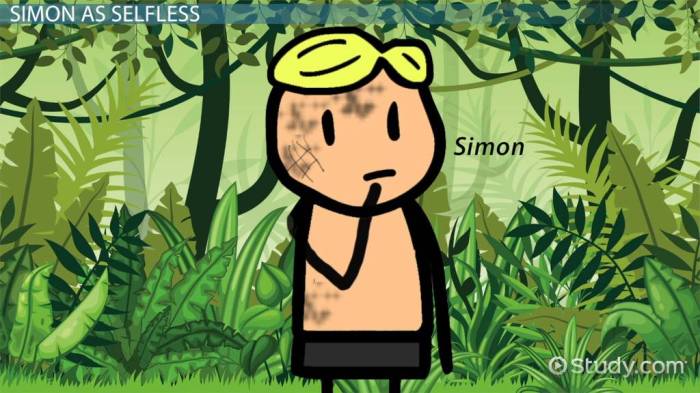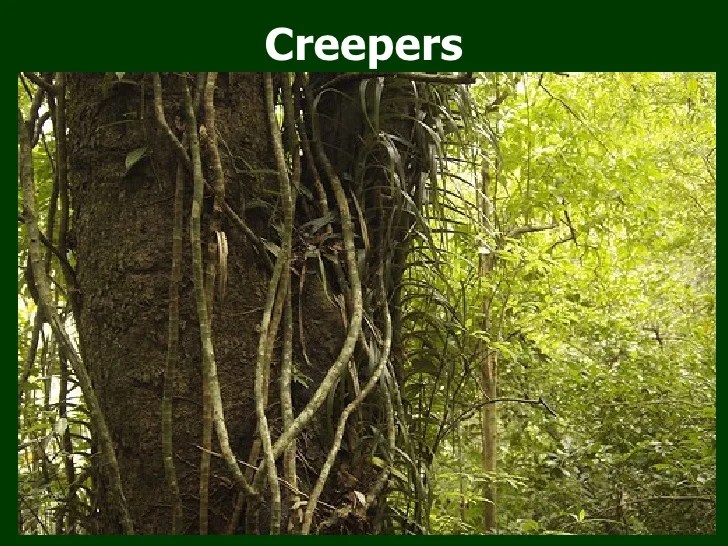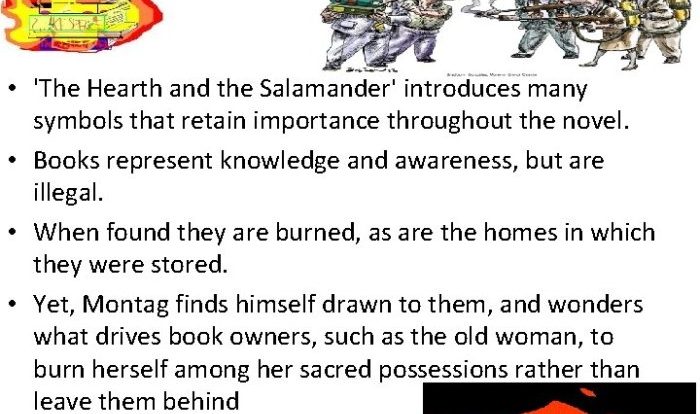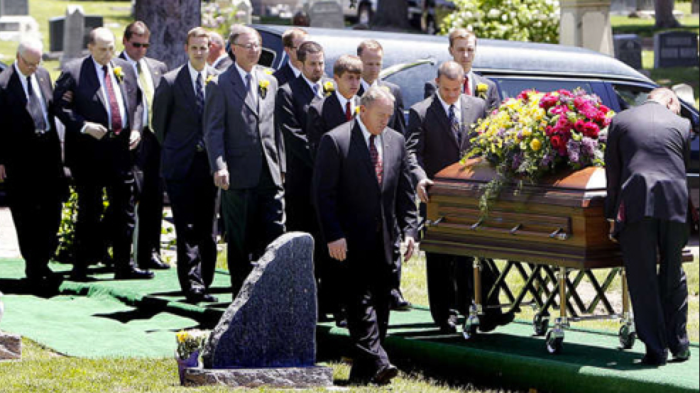Lord of the flies creepers – In William Golding’s seminal novel, “Lord of the Flies,” the enigmatic creepers emerge as a chilling symbol of the boys’ descent into savagery. Their physical presence and psychological impact on the characters raise profound questions about the nature of fear, order, and human nature itself.
As the boys become increasingly isolated on the island, the creepers’ influence becomes undeniable. Their grotesque appearance and nocturnal habits instill a sense of terror, driving the boys towards paranoia and violence.
Creepers in the Novel

The creepers in William Golding’s Lord of the Fliesare grotesque, savage creatures that represent the primal instincts and fears of the boys stranded on the island. They are described as having “pale, bloodless faces,” “red eyes,” and “sharp, gleaming teeth.” They are swift and agile, and they move with a terrifying, unnatural grace.
The creepers are a constant threat to the boys, and they symbolize the dangers that lurk in the wilderness and within themselves. They represent the savagery that is unleashed when the boys abandon the rules of civilization and embrace their primal instincts.
The creepers also symbolize the fear of the unknown, the fear of the darkness, and the fear of death.
The Creepers’ Role in the Boys’ Descent into Chaos
The creepers play a significant role in the boys’ descent into chaos. They are a constant reminder of the dangers that surround them, and they help to create a sense of paranoia and fear. The boys become increasingly obsessed with the creepers, and they begin to see them everywhere they go.
This obsession leads to a cycle of violence and fear, as the boys become more and more afraid of the creepers and more willing to use violence to protect themselves.
The creepers are a powerful symbol of the savagery that is inherent in human nature. They represent the darkness that can lurk within us all, and they serve as a warning about the dangers of abandoning the rules of civilization.
The Creepers’ Impact on the Boys

The creepers, grotesque, vine-like plants, exert a sinister influence on the boys, profoundly altering their behavior and relationships. Their presence contributes to the deterioration of social order and triggers profound psychological distress.
Influence on Behavior
The creepers evoke a primal fear in the boys, causing them to act irrationally and aggressively. Fear of the creepers’ unknown nature leads to paranoia and suspicion, driving the boys to turn against each other. The creepers’ ability to move silently and unseen amplifies this fear, creating an atmosphere of constant unease and mistrust.
Breakdown of Social Order
The fear of the creepers disrupts the boys’ attempts to establish a functioning society. The boys’ focus shifts from survival and cooperation to fear and self-preservation. The creepers become a symbol of chaos and disorder, undermining the boys’ ability to maintain rules and hierarchies.
Psychological Effects
The creepers have a profound impact on the boys’ psychological well-being. The constant threat of the creepers causes anxiety, paranoia, and insomnia. The boys become withdrawn and isolated, haunted by nightmares and hallucinations. The creepers represent the boys’ inner fears and insecurities, becoming a manifestation of their primal instincts and the darkness within.
The Creepers as a Reflection of Human Nature

In William Golding’s Lord of the Flies, the creepers serve as a potent allegory for the dark side of human nature. They represent the primal instincts and savage impulses that lurk beneath the veneer of civilization, waiting for an opportunity to break free.
The Creepers and the Boys’ Fears, Lord of the flies creepers
The creepers embody the boys’ own fears and insecurities. They are a manifestation of their primal fears of the unknown, the wilderness, and their own mortality. As the boys become increasingly isolated and desperate, the creepers become more prominent, reflecting the growing darkness within their hearts.
The Significance of the Creepers
The creepers play a pivotal role in the novel’s exploration of human nature. They serve as a constant reminder that even in the most seemingly innocent of settings, the potential for savagery and violence is always present. Through the creepers, Golding challenges the notion that humans are inherently good and reveals the darkness that can reside within us all.
To prepare for the upcoming Lord of the Flies test, you might find the unit 9 progress check mcq helpful. It’s a great way to assess your understanding of the novel’s themes and characters, including the complex and intriguing Jack Merridew.
So, after brushing up on the creepers’ role in the story, be sure to check out the mcq to test your knowledge and prepare for the exam.
The Creepers in Film Adaptations

The creepers, a haunting and enigmatic presence in William Golding’s “Lord of the Flies,” have been interpreted and depicted in various ways in film adaptations of the novel. These interpretations have significantly influenced the meaning and impact of the creepers within the cinematic context.
The Creepers’ Depiction in Film Adaptations
In Peter Brook’s 1963 adaptation, the creepers are portrayed as large, crawling creatures with menacing, glowing eyes. This depiction emphasizes their physical threat and the sense of fear and paranoia they instill in the boys.
In contrast, Harry Hook’s 1990 adaptation presents the creepers as more ethereal and psychological entities. They are depicted as shadowy figures that appear and disappear at will, representing the boys’ inner fears and anxieties.
Filmmakers’ Interpretations and the Creepers’ Impact
The filmmakers’ interpretations of the creepers have a profound impact on the meaning and impact of these creatures. Brook’s depiction of the creepers as physical threats reinforces the novel’s theme of the savagery and violence that can lurk within human nature.
Hook’s interpretation, on the other hand, emphasizes the psychological and symbolic aspects of the creepers. By portraying them as representations of the boys’ inner fears, the film highlights the destructive power of fear and the fragility of human civilization.
The Creepers as a Cinematic Device
The creepers serve as an effective cinematic device, enhancing the film’s atmosphere and suspense. Their unpredictable appearances and menacing presence create a sense of unease and tension, keeping the audience on edge throughout the film.
Moreover, the creepers’ ability to represent both physical and psychological threats allows them to function as a multifaceted symbol, enriching the film’s exploration of human nature and the complexities of civilization.
FAQ Resource: Lord Of The Flies Creepers
What is the significance of the creepers’ physical appearance?
The creepers’ grotesque features, such as their sharp claws, glowing eyes, and foul odor, represent the boys’ primal fears and the lurking savagery within.
How do the creepers contribute to the breakdown of social order?
The fear of the creepers drives the boys to abandon their initial attempts at self-governance and embrace violence, leading to the disintegration of their society.
What do the creepers symbolize about human nature?
The creepers represent the dark side of human nature, the capacity for cruelty, fear, and regression that exists within us all.



